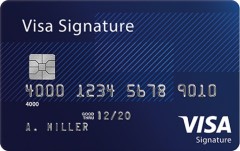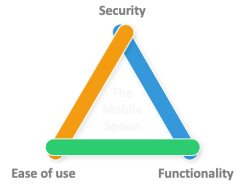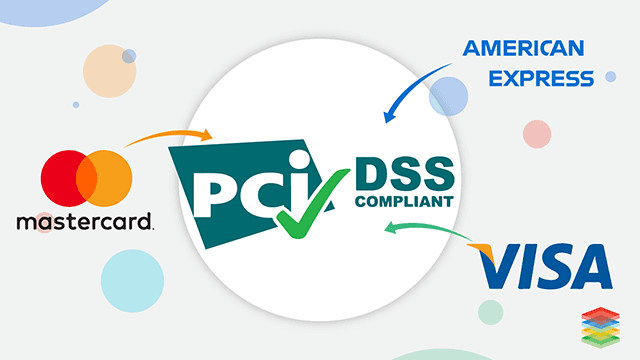Operations and Administration
Credentials
There are multiple forms of credentials involved when using the Strivve Platform and specifically the CardSavr API.
- User credentials represent the principal identity of the person or computer application agent using the CardSavr platform.
- Card credentials represent the payment card being placed on merchant sites by CardSavr.
- Merchant credentials represent the principal identity of the user using an online merchant site.
User Credentials

This credential is CardSavr specific to a user object and represents the principal identity of the person or application agent using the CardSavr platform.
User Credential Properties
User Credentials have multiple properties associated with them established at the time of creation of the user object.
Name
A CardSavr user <strong>must</strong> have a unique name or label. This is used to identify the identity or the person or application agent using the CardSavr platform.
Password
A password is used as one of the mechanisms to verify the authenticity of a principal identity attempting to login to the CardSavr platform. Users without a password can not log in directly, but rather they must use a credential grant. Passwords can be auto-generated by another system, pre-existing keys identifying said user in another system, or a GUID, etc
Credential Grant
An OAuth token, known as a Credential Grant within CardSavr is another mechanism used to authenticate a principal identity during login. Credential grants must be acquired from CardSavr by a privileged user, typically by the roles of cardholder_agent or customer_agent, for the purpose of Single Sign On.
Authorization Role
There are multiple roles with different access authorization privileges for API services. A User is only ever assigned one role and only one role. Roles can be reassigned by a user with a higher level of authorization role, such that it has sufficient privileges to do so. However role reassignment does not take effect until the next time that particular user logins into the platform. The following roles are available for partner usage:
- admin: Most privileged user. This is typically a real person.
- cardholder_agent: A user restricted to creating cardholder users. This is intended for front end applications performing creation of a cardholder user and acquiring a credential grant for them.
- customer_agent: The second most privileged user. This is intended for backend applications performing a multitude of automated operations.
Payment Card Credentials

These credentials represent a payment card, including authenticity information.
Payment Credential Properties
PCI Primary Account Number (PAN)
Currently the 16 digit card number for a payment card. An expanded 19 digit card number is scheduled for payment cards issued in 2020.
PCI Card Verification Value (CVV), (CVV2)
This 3 or 4 digit number is used as the primary data to authorize a PAN for a transaction.
Expiration
This MM/YY is the last month and year the payment card is valid for use in authorizing transactions.
PCI Sensitive Authentication Data (SAD)
Data used by card issuers of payment cards to authorize transactions. This information requires stringent security handling. CardSavr is PCI-DSS compliant and takes great care to protect this information when it is stored temporarily or persistently within the CardSavr platform.
Personal Identifiable Information (PII)
This data represents artifacts that can be used to identify a person.
Cardholder Name
Name of the person the payment card has been issued to.
Cardholder Address
Billing postal address of the person the payment card has been issued to.
Payment Credential Persistence
The CardSavr API provides fine grain control of storing Payment Credentials within the CardSavr platform to meet the storage policies of integration partners.
At a minimum, Payment Credentials must be stored temporarily until the payment card is placed on a merchant site. Depending on the security policies of the integrating partner, these credentials can be stored persistently as long as the partner wishes and can be updated or deleted by the partner at any time.
Merchant Credentials
These credentials represent the principal identity of the Cardholder user on an online merchant site.

Merchant Credential Properties
User Name
The name of the cardholder user, used to identify them with the merchant site.
Password
The password used to verify the authenticity of a user attempting to login to the merchant site.
Two Factor Authentication (TFA)
Merchant sites may challenge the cardholder user for an additional artifact to be used ln conjunction with the password to verify the identity of the user. These challenges can come in various forms, via SMS text, an email, or possibly some other mechanism. Merchants may have setup TFA themselves or the merchant site may issue a TFA to authorize a device it hasn’t seen before. CardSavr uses Robotic Process Automation to interact with merchant sites and its virtual browsers may need to be registered with the merchant site via TFA. CardSavr will message the TFA challenge to the partner application and require the cardholder user to provide the TFA code during placement of the payment card on the site.
CAPTCHA/reCAPTCHA
This is another form of a TFA. These are handled within the CardSavr platform and do not require any direct cardholder, cardholder application, or system interactions.
Merchant Credential Persistence
The API also provides fine grain control of storing Merchant Credentials within the CardSavr platform to meet the storage policies of integration partners. At a minimum, Merchant Credentials must be stored temporarily until the payment card is placed on a merchant site. Depending on the security policies of the integrating partner, these credentials can be stored persistently as long as the partner wishes and can be updated or deleted by the partner at any time.
UX Convenience vs Security Balance

The persistent storing of merchant credentials has additional considerations for user experience. Credentials that are stored within CardSavr and are still valid, enable a card to be placed or updated without having the cardholder present. This may be desirable in some use cases, for example automatically replacing an expired or compromised card on a merchant site. CardSavr provides a highly secure storage of Merchant Credentials that can address the security thresholds of many partners.
Credential Data Protection

All Payment Credential types, including SAD and PII, <strong>must</strong> be protected per PCI-DSS controls. Merchant Credentials are not a concept that exists within PCI compliance. They are very sensitive information and it is incumbent upon Strivve to securely store them at or above PCI-DSS compliance mechanisms. This is necessary to ensure cardholder trust with the partner and transitively Strivve is not compromised. Strive has designed and implemented a system that maintains both PCI SAD and Merchant Credentials with security mechanisms more stringent than PCI-DSS controls require.

